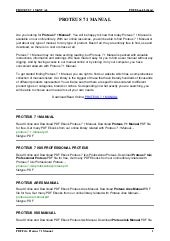

You can also use the corresponding button on the toolbar to complete this operation.Īs you can see that the work area is empty, and we want to use all the elements placed in the list on the left.īefore placing the components, we must draw a border, we use the 2D Graphics Box Mode button to draw the borderīefore starting to draw ,we must first select the color, since this is a border, we choose the yellow color (Board Edge), as we can see on the setting tool at the bottom of the main window.Ĭlick in the workspace, hold down the left button ,drag a rectangle of appropriate size ,release the button. After the file has been generated, from the Tools menu select Tools -> Netlist to ARES, this will launch ARES software. The settings dialog box pops up, keep the default settings, click OK to generate the netlist file. Select the PCB footprints for all the components, then open the Netlist Compiler from the Tools menu of Isis Proteus menu Tools -> Netlist Compiler.

Click the ? Button to open the PCB package selection dialogĬhoose a suitable PCB footprint, click OK to finish. Open the Properties dialog box for the CAP-ELEC component.

In this case, you must add the appropriate footprint as in the CAP-ELEC example below: When you add a component in ISIS, some components are automatically configured with a PCB footprint, while other components don’t have PCB footprint associated with the component, and you can add it manually. The PIC16F877 has two hidden pins VDD and VSS, the VDD pin must be set as POWER and the VSS pin must be set as GROUND. This microcontroller circuit has the following components: Let’s start from this complete ISIS Proteus schematic
#Tutorial isis proteus 7 download#
The Proteus simulation files of the device are available for download after accessing this article.
#Tutorial isis proteus 7 how to#
We ‘ll se how to model a coil and try different values for the inductive and resistive component to validate the simulation. We ‘ll se how to implement and simulate with Proteus the circuit which consists of three sections: the low frequency pulse generator, the ring amplitude comparator and the LED bargraph display. Low loss components, will turn on four or more LEDs, while components with short circuits will turn on few or no LEDs. This tester is very useful in finding coils with shorted turns, and wound components like yoke windings and SMPS transformers. It doesn ‘t measure the inductance value of a coil, but rather the ratio of its resistive part and the inductive part. It ‘s the In-circuit LOPT (Line OutPut Transformer) Tester by Bob Parker that allows to evaluate the smooth functioning of a coil by turning on a number of different colored LEDs. This article deals with the Proteus simulation (version 7 and higher) of a low cost and very useful coils tester, easy to build by yourself. Leave blank the Datasheet Filename edit field:Ĭonfirm the update request in the next message box Next button, select PACKAGE from the Component Properties and Definitions options: 14 Packagings window shows the PCB assigned Now, let ‘s click on the “Assign Packages” button,įig. 10 Type “led” on Pick Packages windowĭouble click over the first line, under the letter “A” We have to assign one to it: select the component, right mouse button, and let ‘s choose “Make Device”:Ĭlick on “Add” button and type the keyword “led” on the “Pick Packages” window, and select LED PACKAGEįig. 6 PCB package not specified for the LED component Regarding the PCB assignment, let ‘s note that the only component that hasn ‘t an assigned footprint is the animated red LED:įig. Load the hex file of the blink project in the “Program File” edit field:
#Tutorial isis proteus 7 pro#
hex file should work for both, and also for the project implemented with ARDUINO Pro Mini model.Ĭlick the right mouse button, over the model, and choose “Edit Properties”: Let ‘s note that the PB5 output has a different numeration in the two models, but the. 2 The same project above implemented with ARDUINO UNO simulation model We can replace the microcontroller, capacitors and crystal oscillator with the ARDUINO UNO simulation model:įig. 1 Simple project implemented with a microcontroller model We can download for example the controlling LED project implemented with a microcontroler:įig. Now we are going to see how is simple to use this components models for simulating ARDUINO projects. We have already seen in the article “ARDUINO Simulation PCB and 3D Models Libraries for Proteus”, how to add the ARDUINO simulation, footprints and 3D models libraries to Proteus.


 0 kommentar(er)
0 kommentar(er)
